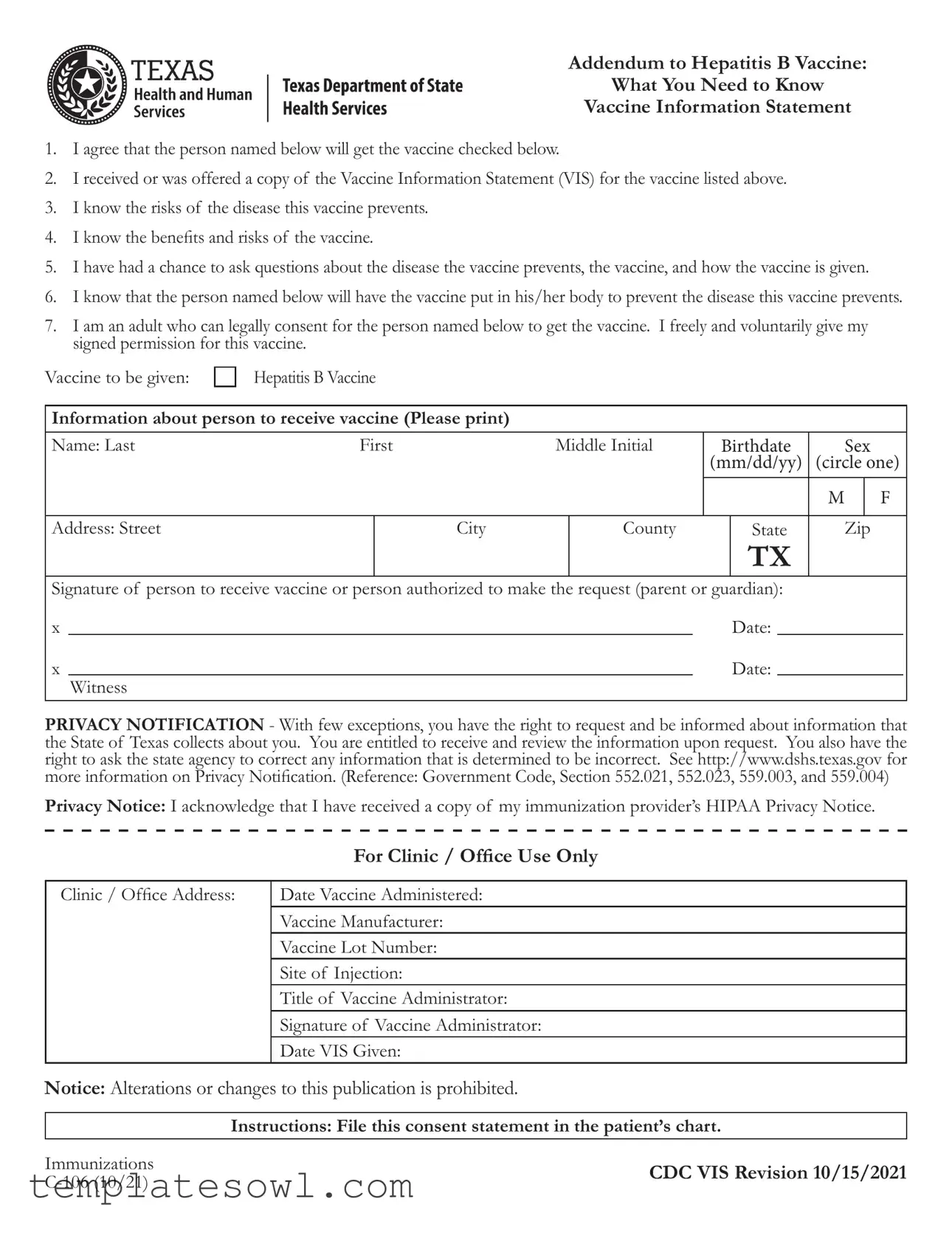What is the EC 106 form?
The EC 106 form is an addendum related to the Hepatitis B vaccine. It serves as a consent statement for individuals receiving the vaccine. This form outlines the rights of the individual, the information provided about the vaccine, and the understanding of its benefits and risks.
Who can sign the EC 106 form?
The form can be signed by the person receiving the vaccine if they are an adult. If the recipient is a minor or unable to provide consent, a parent or legal guardian must sign the form on their behalf.
What information is required on the form?
Key details required include the name, birthdate, address, and sex of the person receiving the vaccine. Also, the individual or guardian’s signature, date, and the name of the vaccine being administered must be recorded.
What does the form state about the risks and benefits of the vaccine?
The EC 106 form emphasizes that the signer understands both the risks associated with the Hepatitis B disease and the benefits and risks of receiving the vaccine. This information is crucial for informed consent.
What should individuals do if they have questions about the vaccine?
The form indicates that individuals should have the opportunity to ask questions regarding the disease, the vaccine itself, and the administration process. It is important to clarify any uncertainties before signing the form.
Is personal information protected when filling out the EC 106 form?
Yes, the EC 106 form includes a privacy notification. Individuals have the right to access their information collected by the State of Texas and can request corrections as needed to ensure accuracy.
What happens after the form is signed?
Once the form is signed, it must be filed in the patient’s chart for record-keeping. The clinic or office staff will also document the details of the vaccine administered, including the date, manufacturer, and lot number.
Can the EC 106 form be altered or changed?
No, alterations or changes to the publication of the EC 106 form are prohibited. This is to ensure that all documentation remains consistent and legally valid.
What is a VIS?
A Vaccine Information Statement (VIS) is a document provided to individuals receiving vaccines. It contains essential information about the vaccine, including benefits, risks, and guidance for the recipient. The EC 106 form confirms that the VIS has been received or offered.
Where can I find more information about privacy and consent?
Additional information about privacy and consent can be found at the Texas Department of State Health Services website. It provides guidelines on privacy notifications and individuals’ rights regarding their health information.

